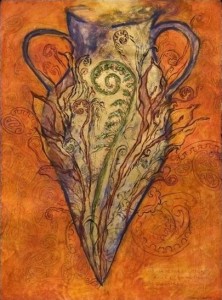Mindful Alexander Technique (MAT) initially evolved out of a journey with severe neck and spine pain—
and neuropathy—caused by a diving accident at
age 13 in which I almost broke my neck and back.
I also had Traumatic Brain Injury as a result of this teenaged diving incident.
For decades I experienced chronic pain—as well as anxiety and depression—treated with pain medication, tranquilizers, and antidepressants.
Other issues included panic attacks, hypervigilance, and related symptoms of PTSD (Post Traumatic Stress Disorder), diagnosed in 2009.
In addition to traditional Western Medicine protocols for pain, anxiety and depression,
I began taking AT lessons at the suggestion of a friend who is an AT teacher.
Outside of my lessons, I integrated AT in-the-body mindful movement and
postural practices into all my activities—which provided increased
awareness, ease and coordination in movement.
The AT also helped with changing habitual movement and stress patterns in basic daily activities such as sitting and using a computer—and walking and using my phone.
Daily AT practice helped reduce stress reactivity, and enabled me to cope better
with chronic pain, anxiety and trauma symptoms. I was able to taper off pain
medication, tranquilizers, and other medications—with a physician’s supervision.
I named these practices Mindful Alexander Technique (MAT).
I experience less hypervigilance and triggering from sudden movements and noises,
and respond better to stress, anxiety and pain. When a stressful event occurs,
I’m able to better regulate my reactions and reset to a more neutral level.
Daily MAT practice continues to help me in dealing with chronic pain, PTSD issues,
and other health concerns—including osteoporosis and balance.
Mana 30″ x 22″ Mixed media and gold leaf on paper. 2006.
Rebecca Keays. Private collection.

